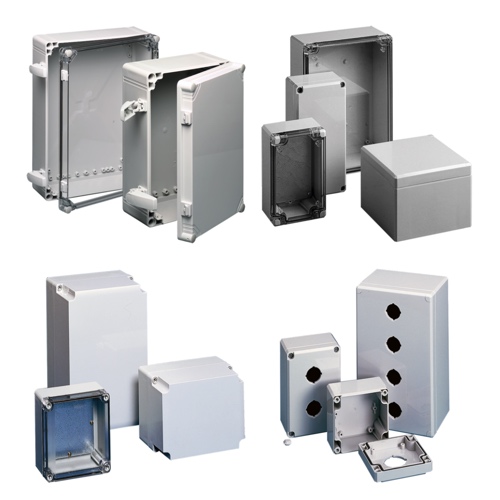nVent Hoffman ABS Enclosures

nVent Hoffman ABS enclosures are constructed using Acrylonitrile Butadiene Styrene (ABS) material, a tough and lightweight thermoplastic. That makes them suitable for use in all kinds of environments. They are engineered to offer a high degree of shielding for electric and electronic parts from the very things that can cause them to fail: moisture, dust, and vibration.
The NEMA 4X rating encompasses almost all of the environmental challenges an electronics enclosure might face indoors. Without that rating, it would fall back on the next best enclosure option. For many applications, ABS is that option. It's tough and reliable, especially for the kinds of electronics we'd use in everyday life.
nVent Hoffman ABS cabinets are designed to be modified to suit a wide variety of applications. The ABS material is widely regarded as the easiest to machine among all of the commonly available options in the plastic-molding world.
More Information about nVent Hoffman Non-Metallic Enclosures
nVent Hoffman non-metallic enclosures are available in a wide selection of sizes and configurations. You can find them as junction boxes, wall-mount enclosures, and free-standing enclosures. And you get mounting options and accessories that make these enclosures usable. nVent Hoffman provides an array of ways to mount your equipment inside the enclosure. You can also buy back panels, hinged covers, and padlocking provisions to keep things secure. These conveniently available accessories make configuring and using the box a snap. In this feature-rich environment, you can put just about anything you need to house into a nVent Hoffman non-metallic enclosure.
Characteristics of non-metallic enclosures:
NEMA 4x rating for outdoor use providing chemical resistance and protection from dust, debris, water and rain.
High insulation value, which provides insulation from cold and hot temperatures, but does not dissipate heat from inside the enclosure.
Non-conductive, meaning components cannot be grounded to the enclosure, but it still provides the same security and tamper resistance levels as metallic enclosures when properly locked.
Types of non-metallic enclosures:
Fiberglass
A thermoset polyester material reinforced with glass fibers. It is the most widely used non-metallic material in the industry. It has high impact strength and rigidity (dimensional stability), a superior working temperature range (-31˚F to 300˚F), excellent electrical properties, moisture and chemical resistance, as well as being cost effective.
Polycarbonate
High-performance thermoplastic resin processed by injection molding or sheet extrusion. It has superior impact resistance, good rigidity (dimensional stability), an extended temperature range (-31˚F to 180˚F), excellent electrical properties, fire retention, UV stability and corrosion resistance in some acidic surroundings. It is not suitable for environments with strong alkalis and organic solvents.
ABS or ABS blends
Acrylonitrile Butadiene Styrene is a common thermoplastic polymer processed by injection molding. It has high impact resistance, but less impact resistance in cold weather compared to polycarbonate, excellent electrical properties, superior chemical and moisture resistance, but a narrower temperature range than fiberglass (-40˚F to 248˚F).
Polyester
High-performance unfilled thermal plastic processed by injection molding. It has high impact resistance, but less impact resistance in cold weather than polycarbonate, excellent electrical properties, superior chemical and moisture resistance, but a narrower temperature range than fiberglass (-40˚F to 248˚F).

